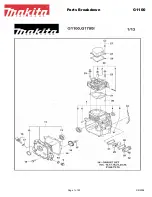
Slimline
™
Power Inverters by Wagan Tech
®
www.wagan.com
9
NOTES:
All recommended cable gauges and fuse sizes are located at the rear
of this manual in the Cable Gauge Table. The table describes Cable Gauges for
lengths greater than supplied cables.
“Round Trip” refers to actual cable distance in feet from the POS (+) battery
terminal to the inverter and back to the NEG (−) battery terminal.
Crimp-on ring terminals are required on all cable ends. The cable ends need to
be stripped of insulation for 1/2 inch before crimping on ring terminals. Select
a crimp terminal size to fit the cable gauge and inverter and battery terminal
connectors. After crimping, make sure that the cable connectors are secure on
the cables so there are no loose connections.
CAUTION:
Making an initial connection between the positive cable end and
the inverter’s positive terminal may cause a spark. This is normal and is a result
of capacitors in the inverter starting to charge. Because of the possibility of
sparking, it is extremely important that both the inverter and the battery bank be
positioned away from any source of flammable fumes or gases. Failure to heed
this warning can result in fire or explosion. Do not make the positive terminal
connection immediately after the batteries have been charging. Allow time for
the battery gasses to vent to outside air.
GROUND TERMINAL WIRE REQUIREMENTS
Use a minimum of 6 gauge stranded wire for enclosure ground wire. Connect
this to the chassis of your vehicle or to the grounding system in your boat. In
a city, the ground wire can connect to a metal cold water pipe that goes
underground. In remote locations, the ground wire can be connected to an
“earth ground”. This can be an attachment to a 6 foot long copper clad metal
rod driven into the ground. In the unlikely event of a short circuit, operating the
inverter without proper grounding can result in electrical shock. Do not directly
connect this ground to the negative terminal on the inverter.
INSTALLATION PROCEDURE
1. Mount the inverter in a secure location. If the inverter is to be mounted
on a wall, mount it horizontally. Make sure that the front and rear of the
inverter has free air flow.
2. Make sure the cables are the proper gauge and have the fuse holder as
close to the battery bank’s Positive (+) terminal as possible.
3. Install the fuse in the Positive (+) cable (Refer to the Cable Gauge Table at
rear of manual).











































